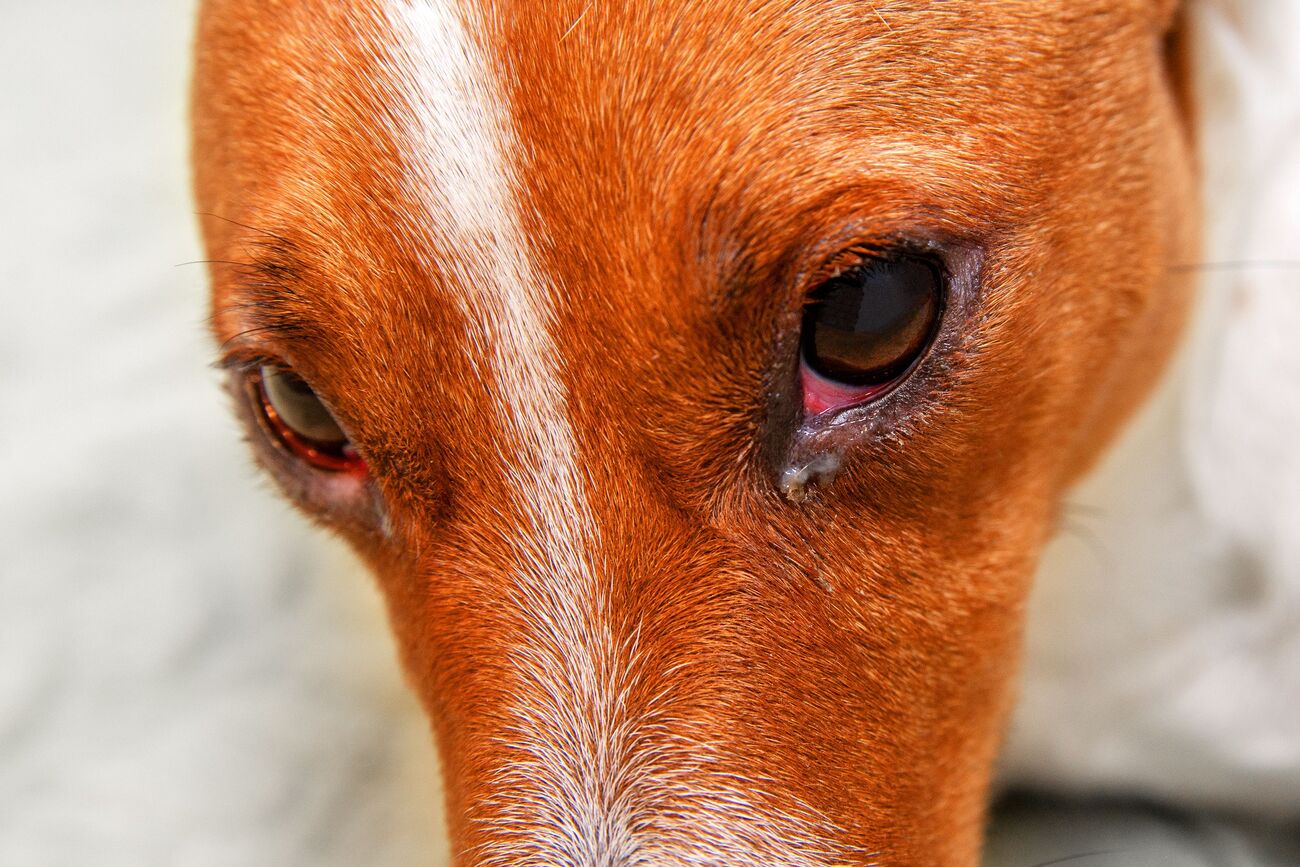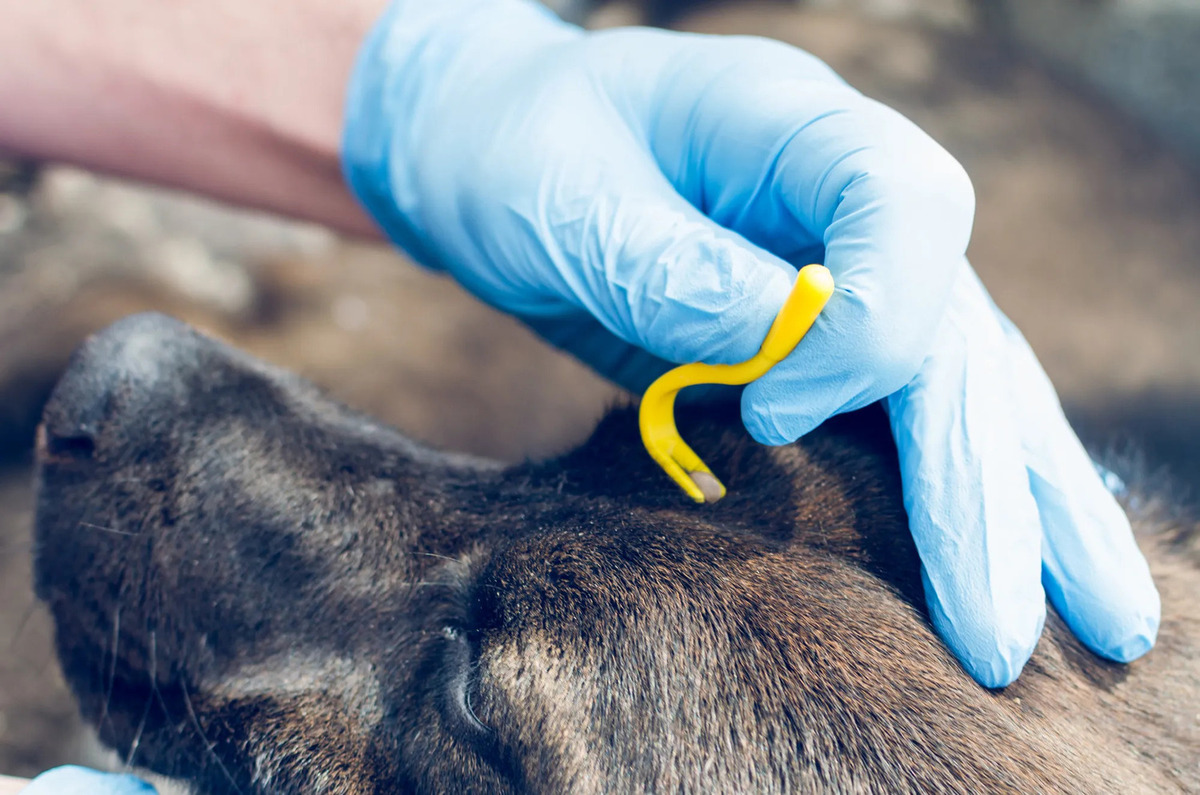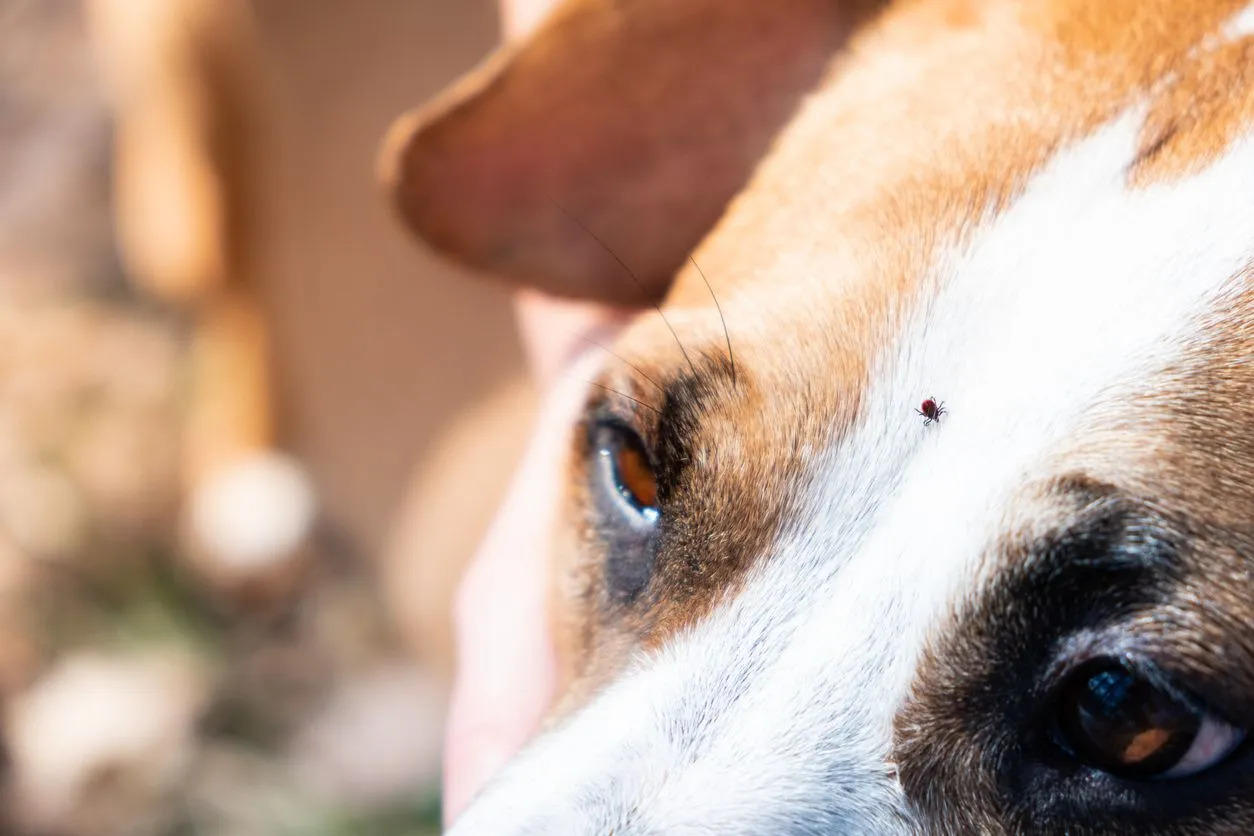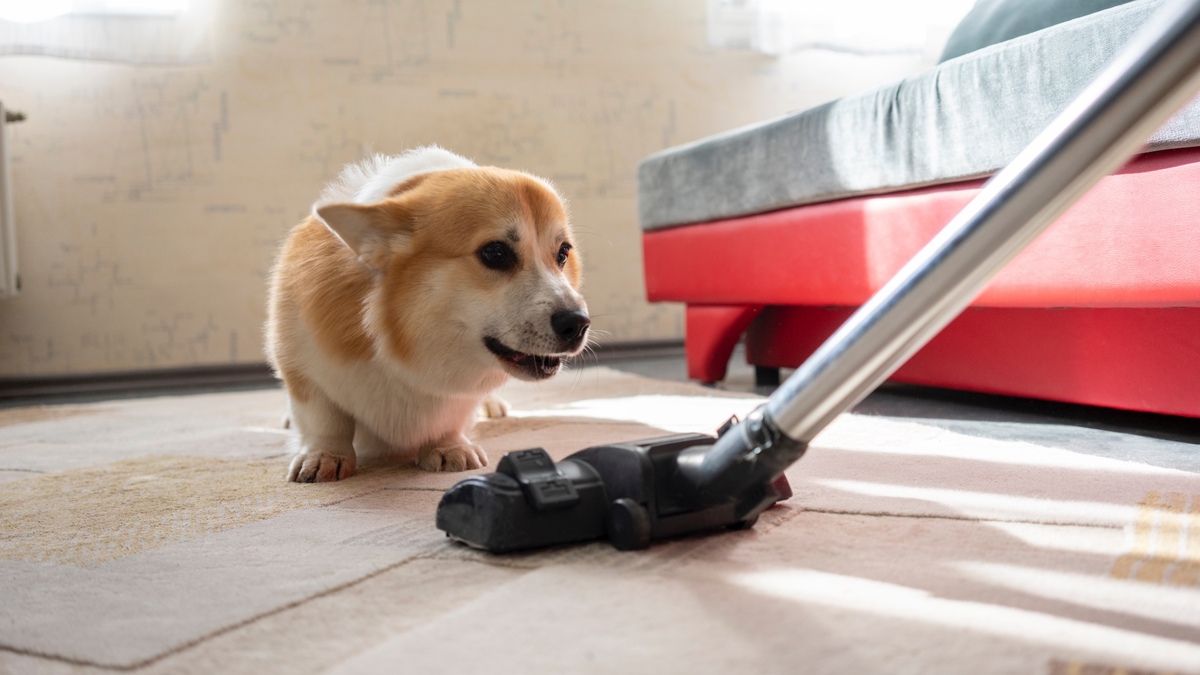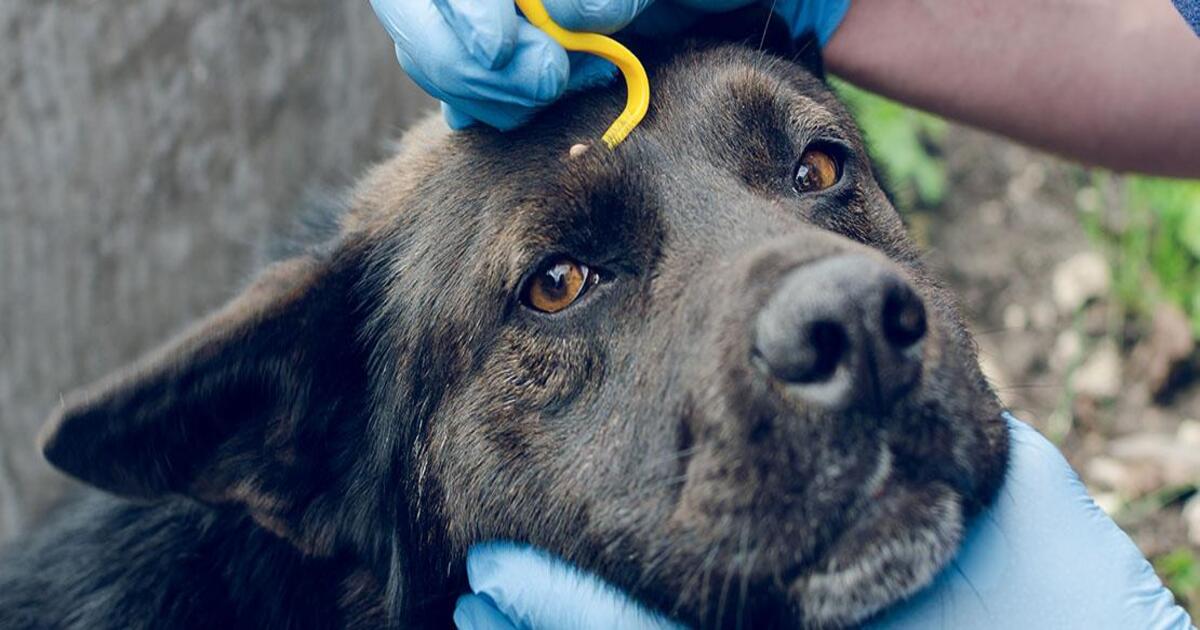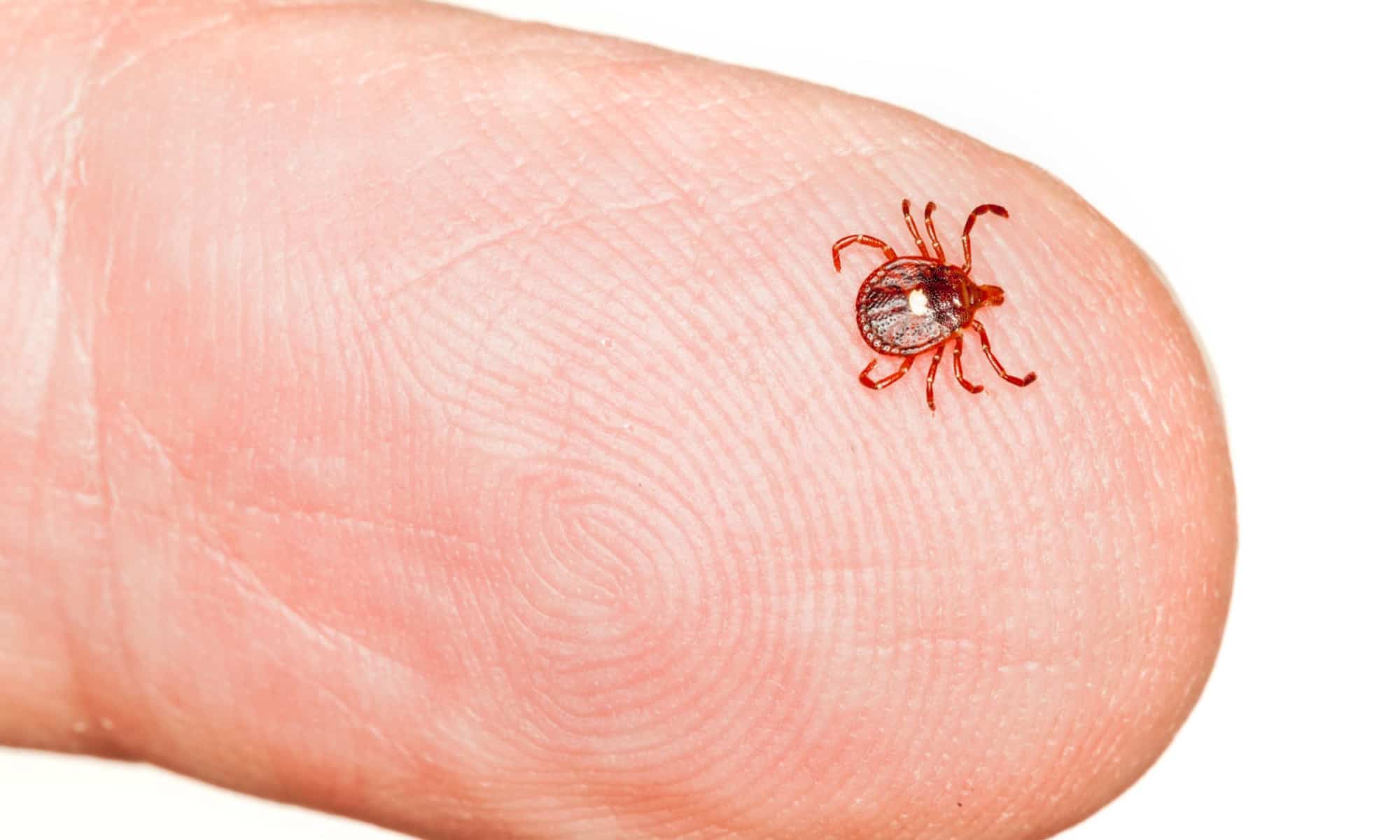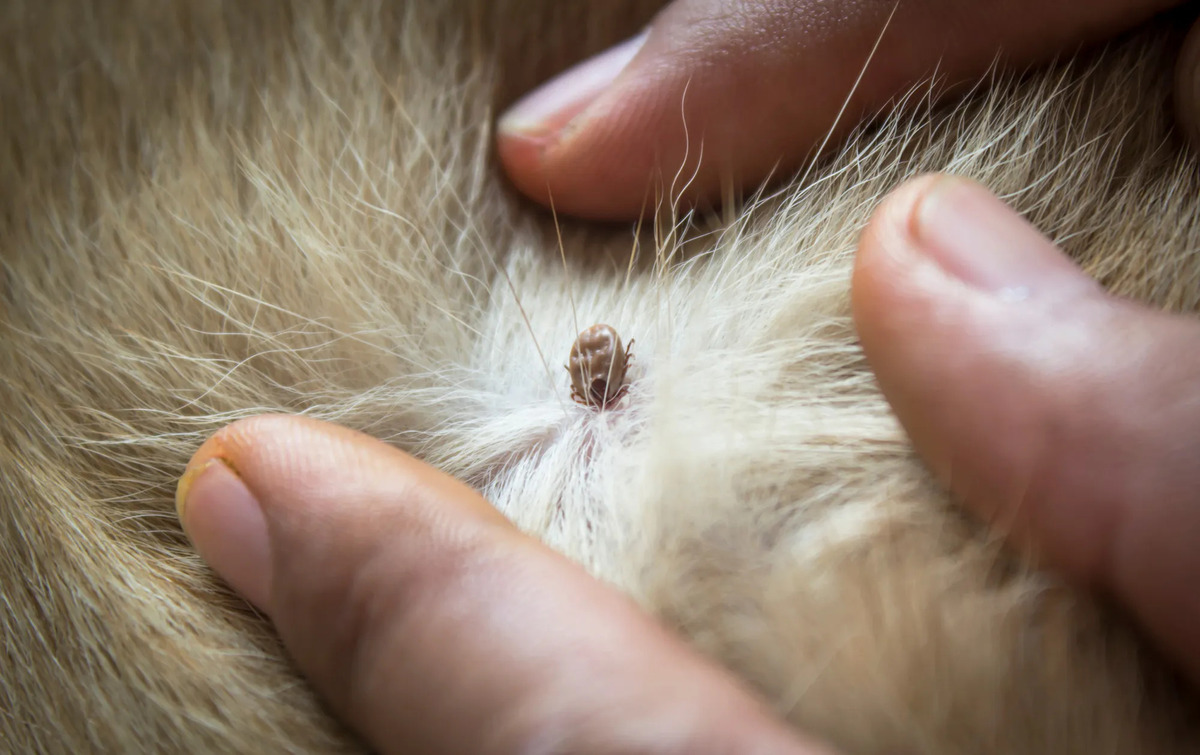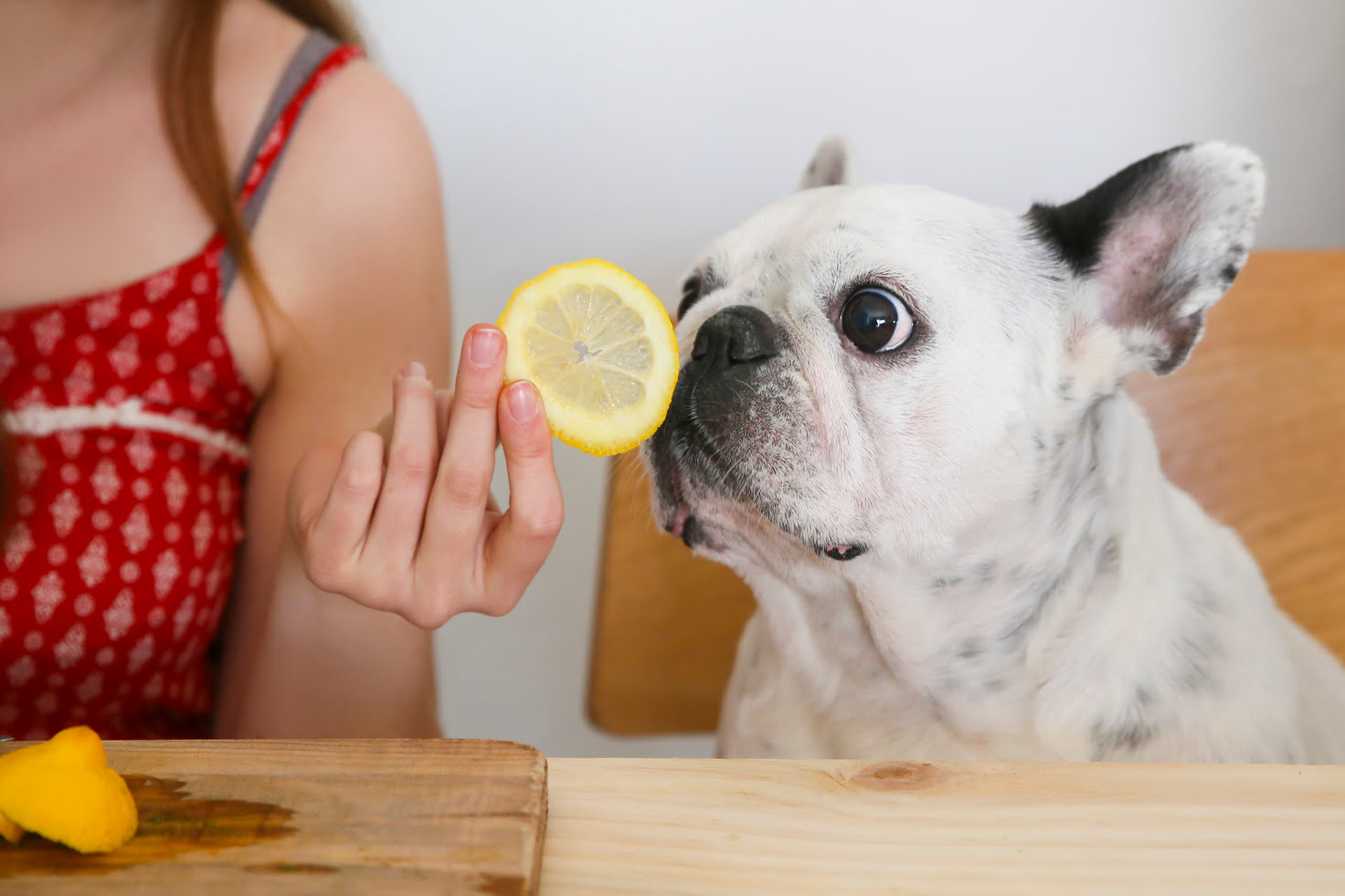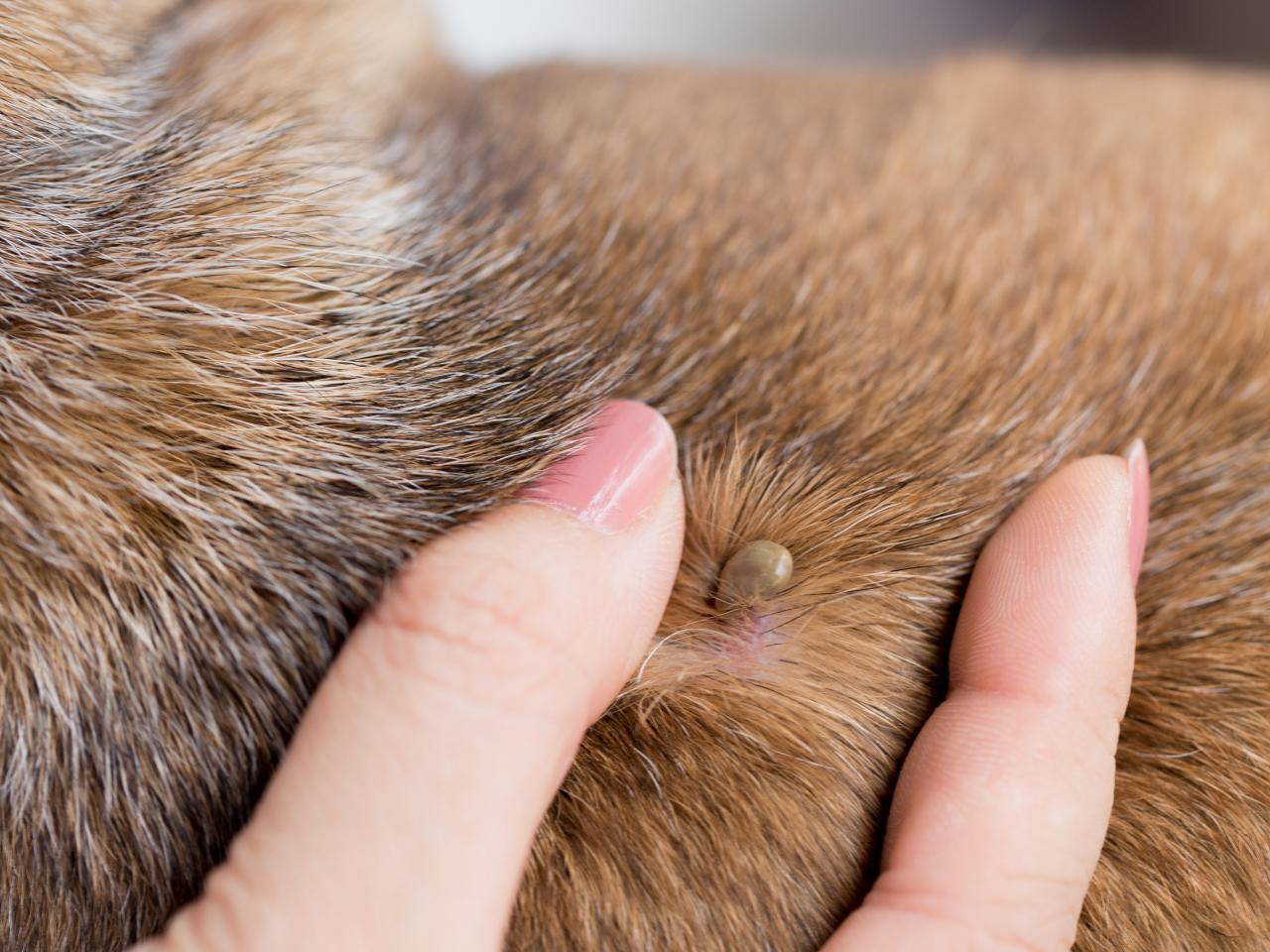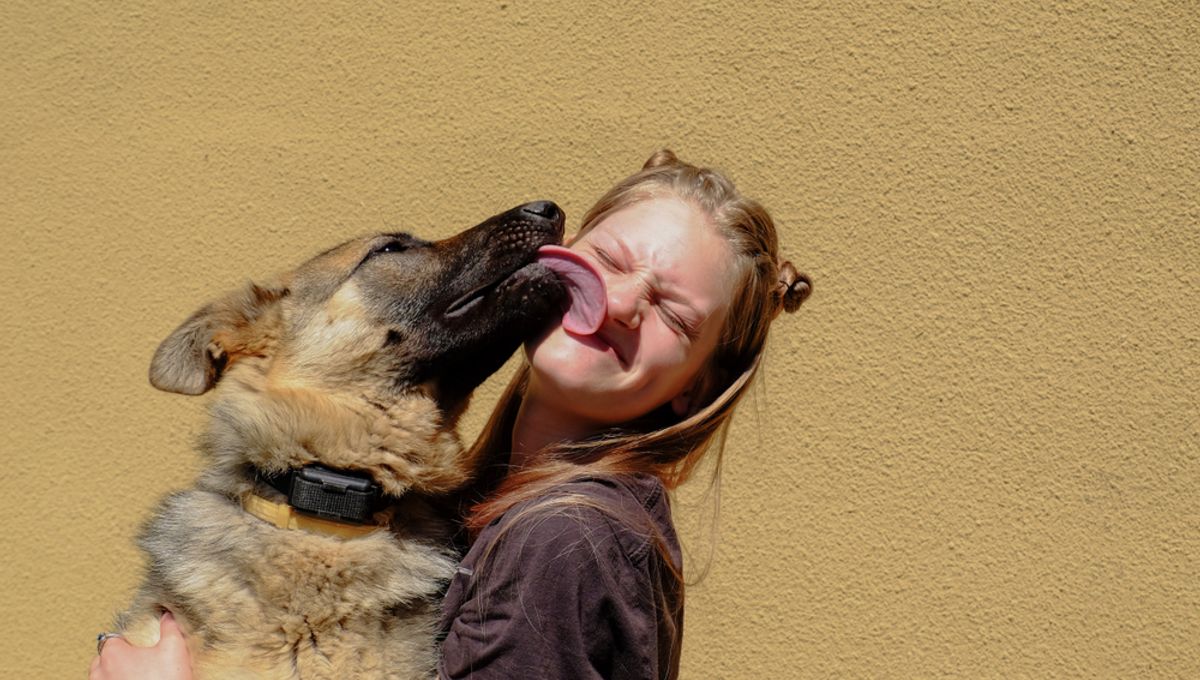Home>Health & Wellness>Common Health Issues>What To Do After Removing A Tick From Your Dog
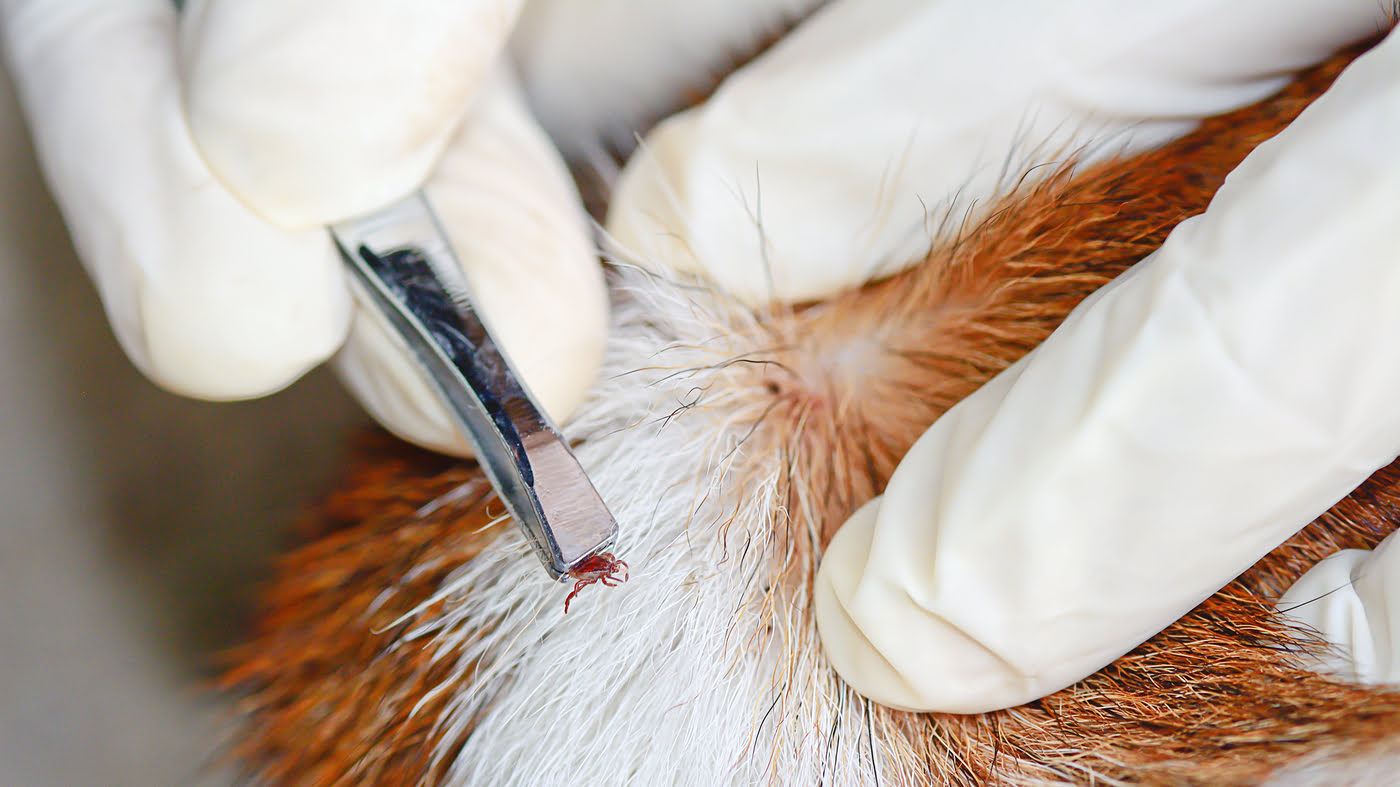

Common Health Issues
What To Do After Removing A Tick From Your Dog
Modified: February 21, 2024
Learn about common health issues in dogs and what to do after removing a tick from your furry friend. Keep your dog healthy and happy with these essential tips.
(Many of the links in this article redirect to a specific reviewed product. Your purchase of these products through affiliate links helps to generate commission for Pawsomeoldies.com, at no extra cost. Learn more)
Table of Contents
Introduction
Discovering a tick on your beloved canine companion can be a concerning experience. Ticks are notorious for transmitting diseases such as Lyme disease, ehrlichiosis, and anaplasmosis, making prompt and proper tick removal essential for your dog's well-being. As a responsible pet owner, it's crucial to know what to do after removing a tick from your dog to ensure their continued health and happiness.
Ticks are small, blood-sucking parasites that latch onto the skin of animals, including dogs, to feed on their blood. These arachnids can be found in grassy, wooded, and outdoor areas, posing a risk to dogs who love to explore the great outdoors. When a tick is discovered on your dog, it's important to remain calm and take swift action to remove it. However, the process doesn't end once the tick is removed. There are crucial steps to follow to minimize the risk of potential health issues for your furry friend.
In the following sections, we will delve into the essential steps to take after removing a tick from your dog. From cleaning the affected area to monitoring for symptoms of tick-borne illnesses and implementing preventive measures, each step plays a vital role in safeguarding your dog's health. By understanding and implementing these steps, you can provide your dog with the best possible care and protection against the potential dangers associated with tick bites.
As we navigate through the subsequent sections, you will gain valuable insights into the necessary actions to take after removing a tick from your dog. By following these guidelines, you can ensure that your loyal companion remains healthy and happy, free from the risks posed by these troublesome parasites. Let's embark on this important journey to safeguard your dog's well-being and learn how to effectively address the aftermath of a tick bite.
Step 1: Clean the area
After successfully removing a tick from your dog, the next crucial step is to thoroughly clean the affected area. This is essential for preventing potential infections and ensuring the proper healing of the skin. Cleaning the area where the tick was attached helps minimize the risk of complications and promotes your dog's overall well-being.
To begin, gather the necessary supplies for cleaning the area. You will need mild soap, water, and antiseptic solution or wipes. It's important to use gentle, pet-safe products to avoid causing any discomfort or irritation to your dog's skin. Once you have the supplies ready, follow these steps to effectively clean the area:
-
Gently Wash the Area: Use lukewarm water and mild soap to gently wash the area where the tick was attached. Be sure to lather the soap and carefully cleanse the skin around the bite site. This helps remove any remaining tick residue, dirt, or bacteria that may have accumulated.
-
Rinse Thoroughly: After washing the area, rinse it thoroughly with clean water to ensure that all traces of soap and debris are removed. Pay close attention to the skin folds and creases to ensure a comprehensive rinse.
-
Apply Antiseptic Solution: Once the area is clean and dry, apply a pet-safe antiseptic solution or wipes to the bite site. This helps disinfect the area and reduces the risk of infection. Be gentle and ensure that the antiseptic solution is applied directly to the affected area.
-
Monitor for Irritation: After cleaning and applying the antiseptic solution, monitor the area for any signs of redness, swelling, or irritation. If you notice any unusual changes or if your dog displays discomfort, consult your veterinarian promptly.
By diligently cleaning the area where the tick was attached, you are taking proactive measures to promote healing and reduce the likelihood of complications. This simple yet crucial step plays a significant role in ensuring your dog's comfort and minimizing the potential risks associated with tick bites.
Remember, the health and well-being of your dog are of utmost importance, and by following these cleaning guidelines, you are actively contributing to their ongoing care and protection. With the area thoroughly cleaned and monitored, you can proceed to the next steps with the confidence that you have taken the necessary measures to address the aftermath of a tick bite.
Step 2: Monitor for symptoms
After removing a tick from your dog and cleaning the affected area, it's crucial to remain vigilant and monitor your furry friend for any potential symptoms of tick-borne illnesses. Ticks are notorious for transmitting various diseases, including Lyme disease, ehrlichiosis, anaplasmosis, and Rocky Mountain spotted fever, among others. These illnesses can have serious implications for your dog's health if left undetected and untreated. Therefore, diligent monitoring for symptoms is essential in safeguarding your dog's well-being.
The following are important symptoms to watch for after a tick bite:
-
Lethargy: Keep an eye on your dog's energy levels. Unexplained fatigue or a noticeable decrease in activity could be an early indicator of a tick-borne illness.
-
Fever: Monitor your dog's body temperature. A persistent fever could signal an underlying infection, prompting the need for immediate veterinary attention.
-
Loss of Appetite: Changes in your dog's eating habits, such as a sudden loss of appetite, could indicate an underlying health issue that warrants further investigation.
-
Joint Pain: Watch for signs of discomfort or reluctance to move, particularly in the joints. Joint pain and stiffness can be indicative of certain tick-borne diseases.
-
Skin Rashes or Irritation: Keep an eye out for any unusual skin rashes, redness, or irritation around the tick bite site or elsewhere on your dog's body.
-
Behavioral Changes: Pay attention to any unusual behaviors or personality changes in your dog. This could include increased irritability, restlessness, or uncharacteristic aggression.
-
Swelling: Check for any abnormal swelling, particularly around the site where the tick was attached. Swelling can be a sign of an inflammatory response to a tick-borne illness.
It's important to note that symptoms of tick-borne illnesses may not always manifest immediately after a tick bite. Some diseases can have an incubation period, during which symptoms may not be readily apparent. Therefore, consistent monitoring of your dog's health in the weeks following a tick bite is crucial.
If you observe any of the aforementioned symptoms or notice any other concerning changes in your dog's health and behavior, it's imperative to seek prompt veterinary care. Early detection and intervention are key in effectively addressing tick-borne illnesses and ensuring the best possible outcome for your dog.
By diligently monitoring for symptoms and remaining attentive to your dog's well-being, you are taking proactive measures to safeguard their health and provide them with the care they deserve. This vigilant approach, coupled with prompt veterinary attention if needed, plays a pivotal role in mitigating the potential risks associated with tick-borne diseases.
With the area thoroughly cleaned and monitored, you can proceed to the next steps with the confidence that you have taken the necessary measures to address the aftermath of a tick bite.
Step 3: Prevent future tick bites
Preventing future tick bites is a crucial aspect of safeguarding your dog's health and well-being. By implementing proactive measures to reduce the risk of tick infestations, you can create a safer environment for your canine companion and minimize the likelihood of future encounters with these troublesome parasites.
1. Regular Tick Checks
Performing regular tick checks on your dog is an effective way to identify and remove ticks before they have the chance to attach and feed. After outdoor activities, thoroughly inspect your dog's fur, paying close attention to areas such as the ears, neck, underarms, and between the toes where ticks are commonly found. Promptly removing any ticks you find can prevent potential bites and reduce the risk of tick-borne diseases.
Read more: How To Remove Tick Eggs From A Dog
2. Tick Prevention Products
Utilizing tick prevention products, such as spot-on treatments, tick collars, and oral medications prescribed by your veterinarian, can provide an added layer of defense against ticks. These products are designed to repel ticks and prevent them from latching onto your dog's skin. By following your veterinarian's recommendations and using these preventive measures consistently, you can significantly reduce the likelihood of tick bites.
3. Environmental Management
Managing your dog's environment plays a key role in tick prevention. Keep your yard and outdoor spaces well-maintained by regularly mowing the lawn, trimming vegetation, and removing leaf litter, as ticks thrive in areas with dense vegetation. Additionally, consider creating a tick-safe zone by using gravel or wood chips to create a barrier between wooded areas and your living space, reducing the risk of tick exposure.
4. Vaccination
In regions where certain tick-borne diseases are prevalent, vaccination against specific illnesses, such as Lyme disease, may be recommended by your veterinarian. Vaccination can provide an additional layer of protection for your dog, helping to bolster their immune system against potential threats posed by tick-borne pathogens.
5. Consultation with a Veterinarian
Consulting with your veterinarian is essential in developing a comprehensive tick prevention plan tailored to your dog's specific needs. Your veterinarian can offer valuable insights into the most effective tick prevention methods, recommend suitable products, and provide guidance on creating a tick-safe environment for your dog.
By incorporating these preventive measures into your dog's care routine, you are taking proactive steps to minimize the risk of future tick bites and the potential health issues associated with tick-borne diseases. Your dedication to tick prevention contributes to creating a safe and nurturing environment for your dog, allowing them to enjoy a healthier and happier life free from the threats posed by ticks.
Read more: What To Do After A Dog’s Eye Is Removed
Conclusion
In conclusion, the aftermath of removing a tick from your dog involves a series of essential steps aimed at ensuring their continued health and well-being. From diligently cleaning the affected area to monitoring for symptoms of tick-borne illnesses and implementing proactive measures to prevent future tick bites, each step plays a crucial role in safeguarding your canine companion.
The process begins with the thorough cleaning of the area where the tick was attached. By using gentle soap, water, and pet-safe antiseptic solutions, you can effectively remove any remaining tick residue and minimize the risk of infection. This simple yet vital step promotes healing and reduces the likelihood of complications, demonstrating your commitment to providing the best care for your dog.
Following the cleaning process, vigilant monitoring for symptoms of tick-borne illnesses becomes paramount. By observing your dog for signs of lethargy, fever, loss of appetite, joint pain, skin rashes, behavioral changes, and swelling, you are actively safeguarding their health. Early detection of symptoms and prompt veterinary attention, if needed, are crucial in addressing potential tick-borne diseases and ensuring the best possible outcome for your furry friend.
Furthermore, the implementation of preventive measures to reduce the risk of future tick bites is integral to your dog's long-term well-being. Regular tick checks, the use of tick prevention products, environmental management, vaccination, and consultation with a veterinarian collectively contribute to creating a safer environment for your dog and minimizing the likelihood of tick encounters.
By embracing these comprehensive steps and integrating them into your dog's care routine, you are demonstrating a deep commitment to their health and happiness. Your proactive approach to addressing the aftermath of a tick bite reflects your dedication as a responsible pet owner, ensuring that your loyal companion can continue to thrive in a safe and nurturing environment.
In essence, the journey of caring for your dog extends beyond the removal of a tick; it encompasses a holistic approach to their well-being. By following the guidelines outlined in this article, you are equipped with the knowledge and tools to effectively address the aftermath of a tick bite and provide your dog with the best possible care and protection against the potential risks associated with tick-borne diseases.
As you embark on this important journey with your canine companion, remember that your commitment to their health and happiness is a testament to the unbreakable bond between humans and their beloved pets. Together, you can navigate the challenges posed by tick bites and create a future filled with joy, vitality, and cherished moments with your cherished four-legged friend.
